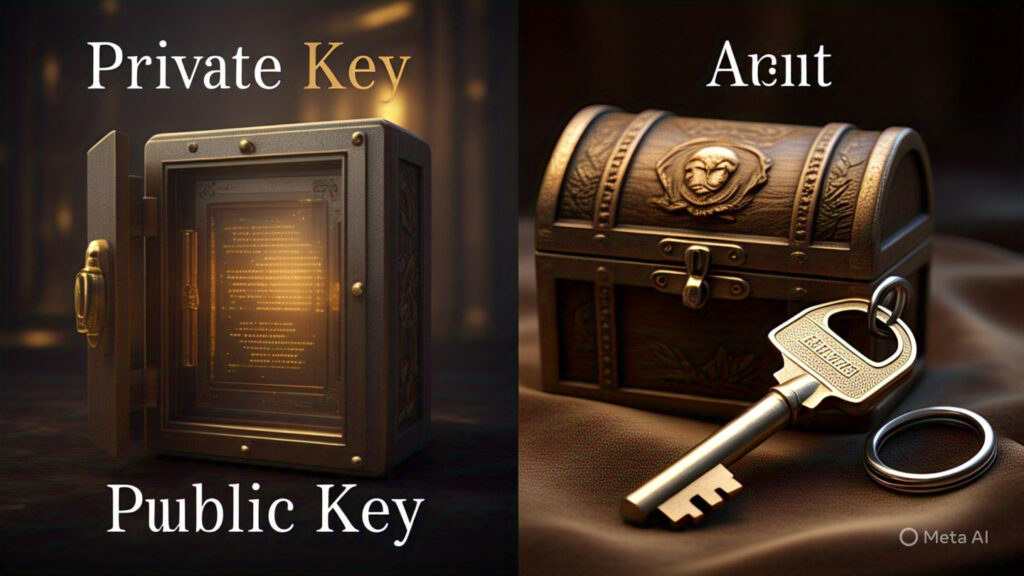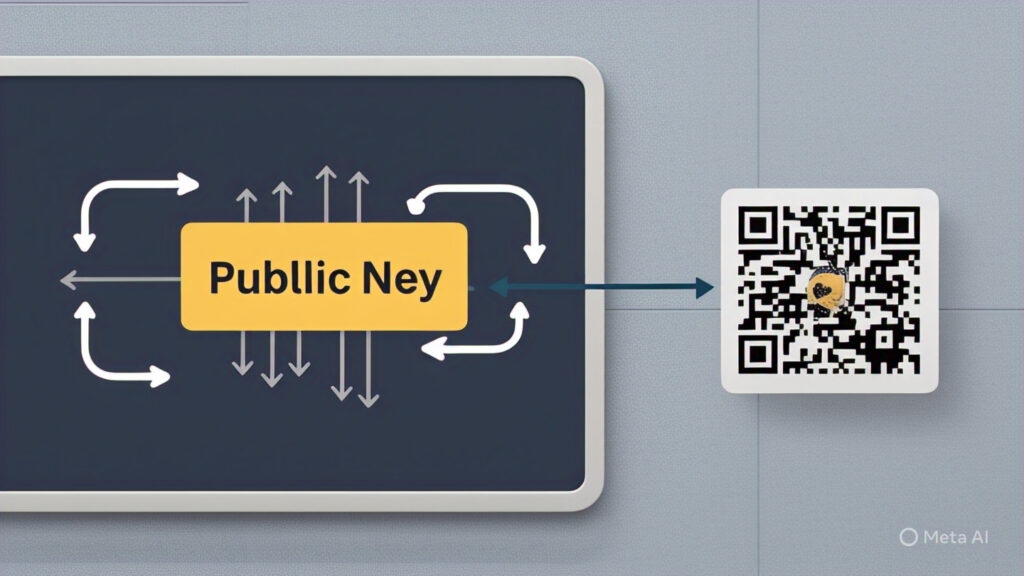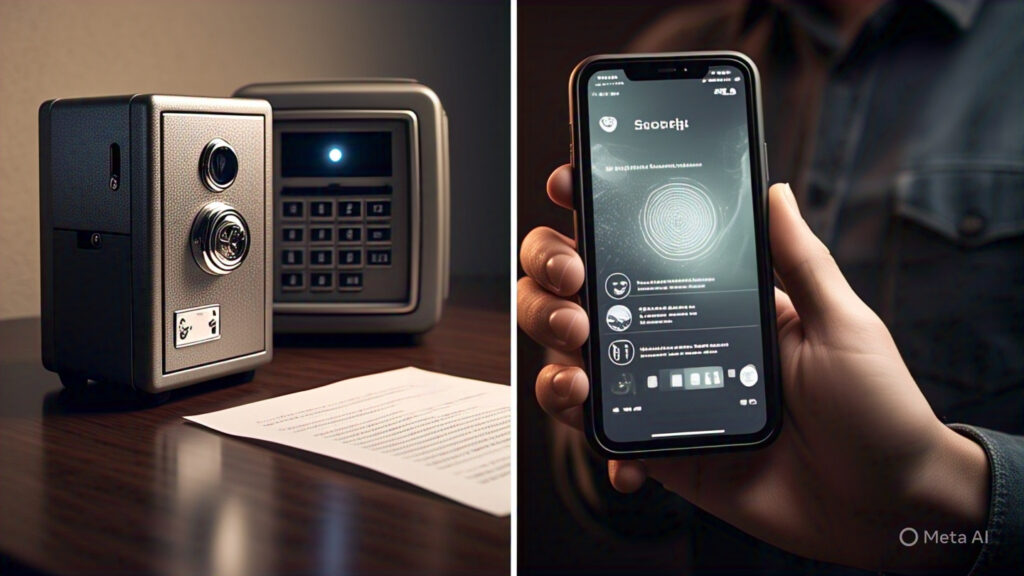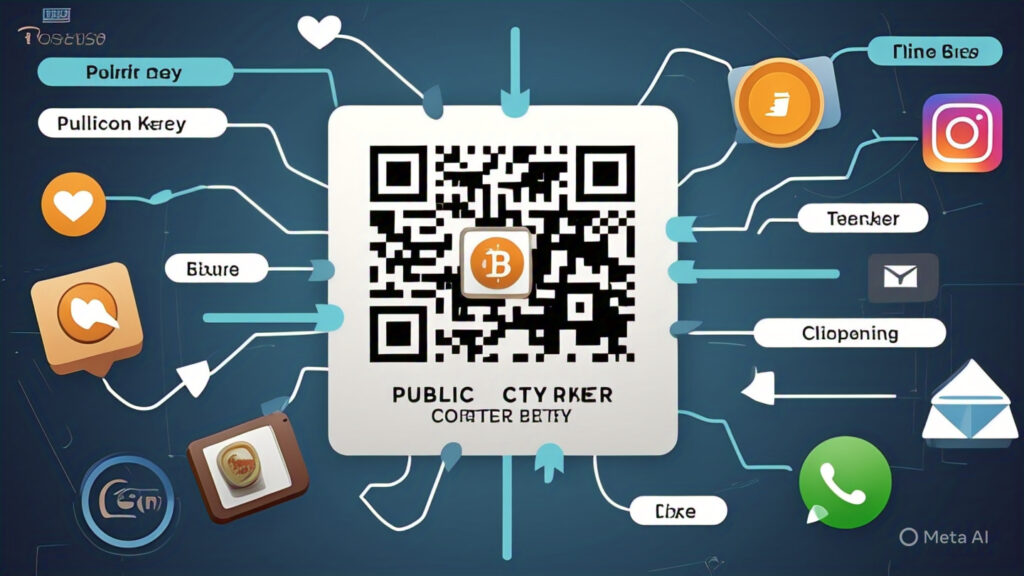Introduction: Unlocking the Secrets of Crypto Security
Embarking on your cryptocurrency journey can feel like stepping into a new world filled with exciting possibilities. You’ve likely heard about Bitcoin, Ethereum, and the potential for digital finance. But as you delve deeper, you’ll encounter two fundamental concepts that underpin the security of your digital assets: private keys and public keys.
Think of these keys as the cornerstones of your crypto ownership and the gatekeepers to your digital vault. Understanding their roles and the critical difference between them is not just technical knowledge; it’s the bedrock of keeping your hard-earned cryptocurrency safe from theft and loss.
This article aims to demystify the concepts of private and public keys, explaining their relationship, their individual functions, and most importantly, why safeguarding your private key is paramount in the world of cryptocurrency. We’ll use analogies and simple language to make these seemingly complex ideas accessible to everyone, empowering you to navigate the crypto landscape with confidence and security.

The Dynamic Duo: How Public and Private Keys Work Together
In the realm of cryptocurrency, your ability to send and receive digital assets hinges on the interplay between your public and private keys. They are mathematically linked but distinct, working together in a secure and ingenious way:
Your Public Key: Your Digital Address
Think of your public key as your cryptocurrency “address” or your account number at a digital bank. It’s a string of alphanumeric characters that is derived from your private key but is designed to be shared safely with others. When someone wants to send you cryptocurrency, they need your public key to initiate the transaction.
Anyone can see your public key and the transactions associated with it on the public blockchain. However, knowing your public key doesn’t grant anyone access to your funds. It’s purely for receiving cryptocurrency.
Analogy: Imagine your email address. You can freely share it with anyone who wants to send you an email. They can send messages to your address, but they can’t access your inbox or read your other emails without your password. Your public key is similar – people can send crypto to your address, but they can’t access or spend it without the corresponding private key.

Your Private Key: The Ultimate Authority
Your private key, on the other hand, is a highly sensitive and secret piece of information. It’s also a string of alphanumeric characters, but it acts as the digital signature that authorizes transactions from your wallet. It proves that you are the legitimate owner of the cryptocurrency associated with your public key and allows you to spend it.
Crucially, your private key must be kept absolutely confidential and never shared with anyone. If someone gains access to your private key, they effectively have full control over your cryptocurrency and can transfer it without your permission. There is no central authority to reverse such transactions in most cryptocurrencies.
Analogy: Continuing the email analogy, your private key is like the super-secret master password to your email account. If someone gets their hands on it, they can not only read your emails but also send emails as you, delete messages, and even lock you out of your own account. Similarly, your private key grants complete control over your cryptocurrency.

The Mathematical Link: A Secure Relationship
Public and private keys are mathematically linked through complex cryptographic algorithms. This link allows the network to verify that a transaction initiated using a private key is legitimate and corresponds to the funds held at the associated public key.
However, the crucial aspect of this mathematical relationship is that while a public key can be derived from a private key, it is virtually impossible to reverse the process – meaning you cannot derive a private key from a public key. This one-way function is what ensures the security of the system.
Analogy: Think of a special type of mailbox with a unique keyhole (your public key). Only a specific, unique key (your private key) can open this mailbox to retrieve the contents (your cryptocurrency) and send new items (authorize transactions). Even if someone sees the mailbox and knows its address, they can’t open it without the specific key.

Why Your Private Key is the Holy Grail of Crypto Security
Understanding the difference between public and private keys leads to the most critical takeaway: your private key is the key to your crypto, and protecting it is paramount. Here’s why:
- Full Control Over Your Funds: Whoever holds the private key controls the cryptocurrency associated with the corresponding public key. There are no exceptions.
- Irreversible Transactions: Once a transaction is authorized with your private key, it is typically irreversible on the blockchain. If your private key is compromised and someone steals your crypto, there’s usually no way to get it back.
- No Central Authority for Recovery: Unlike traditional bank accounts where you can contact the bank to recover lost passwords or report fraudulent activity, in most cryptocurrencies, there is no central authority to help you recover your funds if your private key is lost or stolen. “Not your keys, not your coins” is a fundamental principle in the crypto world.
- Target for Malicious Actors: Because private keys grant direct access to valuable digital assets, they are a primary target for hackers, scammers, and other malicious individuals.

Different Ways Private Keys Are Stored (and the Security Implications)
The security of your cryptocurrency is directly tied to how and where your private keys are stored. Different types of crypto wallets employ various methods, each with its own security trade-offs:
- Software Wallets (Desktop, Mobile, Web Extensions): These wallets store your private keys digitally on the device where the software is installed or within the browser extension’s secure storage. While convenient, the security relies on the security of your device and the wallet software itself. Malware or a compromised device can potentially expose your private keys.
- Security Consideration: Ensure your devices are protected with strong passwords, up-to-date antivirus software, and be cautious of phishing attempts. Use reputable wallet software.
- Online (Web) Wallets (Custodial): With many online wallets, particularly those provided by exchanges, the exchange holds your private keys on their servers. This offers convenience but means you don’t have full custody of your funds. If the exchange is hacked or experiences issues, your funds could be at risk.
- Security Consideration: Choose reputable exchanges with strong security measures. However, it’s generally not recommended to store large amounts of crypto on exchanges for long periods.
- Hardware Wallets: These physical devices store your private keys offline, providing a significant security advantage. To authorize a transaction, you need to physically connect the device and confirm it, making it resistant to online hacking attempts.
- Security Consideration: Hardware wallets are generally considered the most secure option for storing significant amounts of cryptocurrency. Ensure you purchase from a reputable vendor and protect your recovery seed phrase.
- Paper Wallets: These involve printing your public and private keys on a piece of paper, keeping them entirely offline. While highly secure if managed correctly, they require careful handling and are less convenient for frequent transactions.
- Security Consideration: Store your paper wallet in a secure, dry, and fireproof location. Be cautious when generating and using paper wallets.
- Brain Wallets (Highly Risky): As mentioned previously, relying on memorization for your private key is extremely insecure and not recommended. Human memory is fallible, and these keys can be vulnerable to various forms of attack.
- Security Consideration: Avoid brain wallets entirely for any significant amount of cryptocurrency.

The Importance of Your Seed Phrase (Recovery Phrase): Your Backup Plan
Most non-custodial wallets (software and hardware) provide you with a seed phrase or recovery phrase – a series of 12 to 24 words generated when you set up your wallet. This seed phrase is a backup of your private keys.
Think of your seed phrase as the master key that can unlock all the private keys associated with your wallet. If you lose access to your wallet due to a lost or damaged device, you can use your seed phrase to restore your wallet and your cryptocurrency on a new device.
Therefore, protecting your seed phrase is just as crucial as protecting your private keys themselves.
Best Practices for Seed Phrase Security:
- Write it Down: Immediately write down your seed phrase on a physical piece of paper.
- Store it Securely Offline: Keep your written seed phrase in a safe, private location, away from your computer and internet access. Consider multiple secure locations.
- Never Store it Digitally: Do not take a picture of it, save it on your computer, email it to yourself, or store it in the cloud. Digital storage is vulnerable to hacking.
- Be Wary of Anyone Asking for It: Legitimate wallets or support personnel will never ask for your seed phrase. Anyone who does is likely a scammer.
- Consider Hardware Security: For added protection, you can store your seed phrase in a metal seed phrase storage device that is resistant to fire and water damage.

Public Keys: Sharing Safely to Receive Crypto
While your private key is your closely guarded secret, your public key is meant to be shared so you can receive cryptocurrency. Here’s what you need to know about public keys:
- Share with Confidence: You can freely share your public key with anyone who wants to send you crypto.
- Transparency on the Blockchain: Transactions associated with your public key are publicly viewable on the blockchain explorer for that specific cryptocurrency. However, your real-world identity is usually not directly linked to your public key (pseudonymity).
- Multiple Public Keys: You can generate multiple public keys associated with a single private key (especially with more advanced wallets). This can enhance privacy by making it harder to link all your transactions to a single address.

Conclusion: Empowering Your Crypto Security Through Knowledge
Understanding the fundamental difference between private and public keys is the cornerstone of securing your cryptocurrency. Your public key is your digital address, safe to share for receiving funds. Your private key, however, is the ultimate control over your digital assets and must be protected with the utmost care.
By choosing a secure method for storing your private keys (ideally a hardware wallet for significant holdings), diligently safeguarding your seed phrase, and understanding the risks associated with different types of wallets, you can navigate the world of cryptocurrency with greater confidence and security.
Remember, in the decentralized world of crypto, you are your own bank. Taking responsibility for the security of your private keys is the most important step in ensuring the safety of your digital wealth. Stay informed, be vigilant, and prioritize the protection of your cryptographic guardians.



